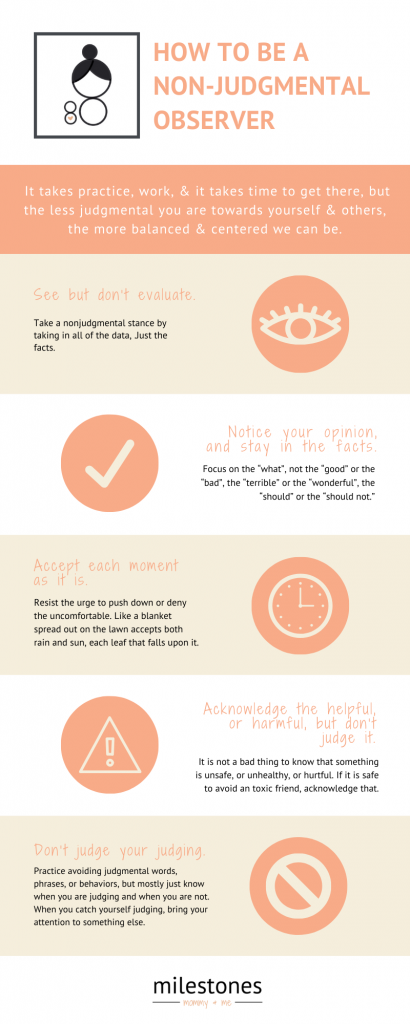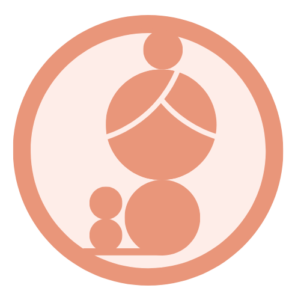The struggle is real.
Last week I normalized the struggle that is motherhood and highlighted the extra hard struggle that is modern motherhood, so this week we are going to take our first big step in terms of finding peace within this struggle. This is an essential step because it frees up more mental space for joy and gives you the clarity you need to objectively and intentionally show up and make decisions as a parent.
Awareness is everything.
As humans, we are wired to struggle. We are also wired in many ways that make our struggles feel exponentially harder than they have to be! Today I’m going to help you get out of your way by learning how to become a non-judgmental observer.
To start, let’s break down what all that means and normalize some human truths that explain many of our thoughts, emotions, and reactions –
Next steps…
Optional extended readings :
If you’re interested, or if you’re experiencing a lot of judgment or shame when you tune in to your experience, a better understanding of how natural and normal a lot of our hard experiences are can be tremendously helpful.
HERE is a complete list of the many cognitive biases we engage in, and HERE is a great read that organizes the biases based on their purpose and flaws, while echoing many of the same points we covered 🙂
Applicable exercise:
Review ‘How to be a Non-Judgmental Observer’ –

Get curious about the thoughts and emotions that are within your awareness. Ask yourself:
- What caused me to feel or think this way?
- What does this feeling remind me of? When have I felt this before?
- Where do I feel this in my body?
- What other feelings or thoughts are under or behind this feeling?
- How did I react/behave in response to this feeling?
- How did I communicate this feeling?
- What is the purpose of this feeling? how does it help me?
- What helps me with this feeling? What do/did I need?
- When I feel this way, what is my ideal response?
Bring attention to your body to get curious about thoughts and emotions outside of your awareness:
(Please note: If you have unresolved trauma this exercise might trigger an intense emotional experience. Guided, individualized professional care may be extremely helpful. You deserve it.)
We tend to hold on to our feelings in different body parts. It is important to tune in to your body to identify your feelings. Here are some steps that can help you do this:
- Physically relax your body for five to ten minutes – practice sitting still, guided meditation, focused breathing… whatever it takes to slow down your mind.
- Ask yourself, “What am I feeling right now?”
- Tune in to that place in your body where you feel the emotional sensations such as anger, fear, or sadness. This is your inner place of feelings.
- Sit in it. Wait and pay attention to whatever comes up as you feel the emotion your body is holding. Do not analyze or judge but become just an observer. If you begin to evaluate then you may not be able to get a sense of your real feeling.
- Once you have obtained a general sense of what you are feeling, and then ask the following questions: where is this feeling in my body? What is the shape of this feeling? If I have to give a color to this feeling, what would it be?
Once you’re able to give a concrete form to feelings (i.e., I feel anxious, tightness in my chest, it’s a yellow circle) then it becomes easier to identify them as they show up. Use the awareness process questions listed above to learn more about them.

